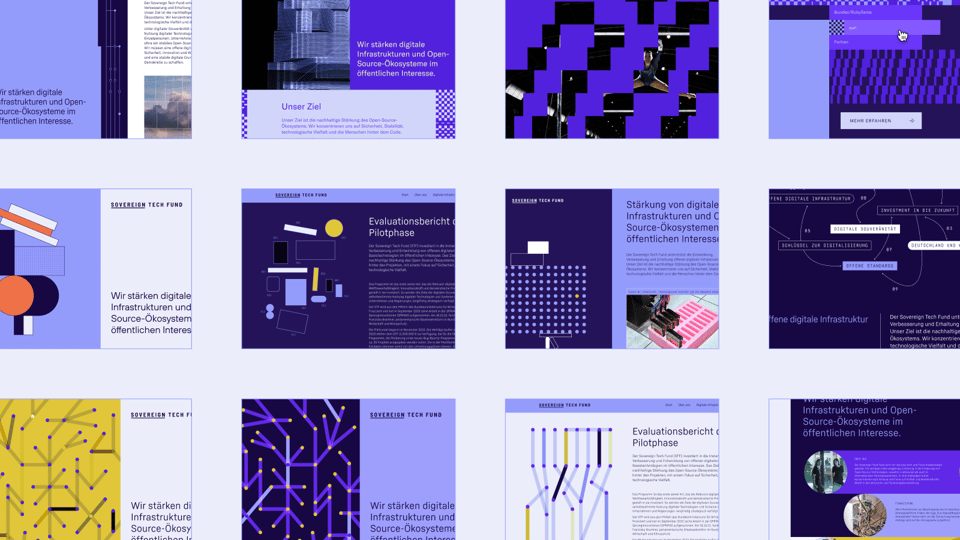Teaming up with Germany’s Sovereign Tech Fund
Hello fellow netizens,
this is Harry, and pling, you’ve got mail!
Lots of software played a role in the delivery of this latest newsletter: While putting it together, we used a web browser running on an operating system to access our newsletter tool, where we typed these words into an interface composed of numerous components, previewed it, then hit send, triggering other services, which wrapped it as an email and sent it across the intertubes to your email provider. And right now, the email app of your choice is using countless software packages to display our sentences on your screen, all invisibly working together under the hood. All software is composed this way, developers pulling in code others created before them, all depending on each other—it’s like Lego, but digital, created all over the world in a decentralized way, packages upon packages, all the way down. When you think about it, it’s quite unlikely and somewhat magical that this patchwork of code even works at all.
A lot of these software lego blocks are open-source and freely available: often built, released and maintained by volunteers who frequently don’t get paid for their efforts. In the process of reading this email you’ve depended on thousands, probably tens of thousands, possibly hundreds of thousands of open-source software packages. Without them, none of our modern communications infrastructure could function.

Why am I telling you this? Well, as societies we’re taking a huge gamble by relying on unpaid volunteer labor to maintain our critical digital infrastructure, taking stability for granted. These diligent maintainers are doing crucial work, often next to a day job—and yet, most funding swirling around in the tech industry goes to the next fancy startup promising InNoVaTiOn, favoring the potentially disruptive new thing over maintaining what we currently have. We all know that’s dangerous, yet few people roll up their sleeves and try to do something about it.
That’s why, earlier this year, we were delighted to learn that the Sovereign Tech Fund exists!
STF is an initiative from the German government to strengthen the open-source ecosystems we all use and depend on, commissioning paid maintenance work on crucial open-source software. An example? STF has invested over half a million euros in Fortran, a programming language my grandmother used in her job at the tax office in the 80s (yes, really!) and which is still highly relevant in scientific environments today, e.g. in modeling the impact of the climate crisis. Pretty cool. Anyhow, we were even more delighted when the folks running STF decided to team up with us, to refresh their brand and design+build them a new website.
The new STF website launched this week, check it out!

We kicked off the project in mid-August, starting with design explorations, evolved those into a modular visual language, which led to the interface design of the website and building it in parallel, in an agile setup. For three months we worked closely with Powen Shiah (STF’s communications manager) and co-founder Adriana Groh. We only met once in person at the beginning of the project, everything since then happened via Zoom calls, on Figjam boards and in Basecamp discussion threads.
This first version of the site has a strong focus on speed and accessibility (aiming for full WCAG 2.2 AA compliance very soon), features a light/dark mode, custom illustrations inspired by this xkcd cartoon, comes in German/English and is backed by Craft, a powerful (and also open-source) CMS. We’re still tweaking things behind the scenes and adding new features, but it felt like a good time to ship a first version. These things are never done anyways.

Around the same time of the website launch, STF announced that they are becoming a permanent and independent organization and we’re honored to be part of their journey! Take a look at the technologies they are investing in—if you’re a software developer you’ll definitely be familiar with a whole bunch of them. Or read about their mission and get to know their team. If you are an open-source maintainer, you could even apply for funding! There’s a lot to see and more to come, we hope you like it!
Until next time,
Harry
PS: Shout-out to Evey for supporting us during the early design phase and to HvD Fonts / Displaay for the beautiful typefaces we use in the branding / the wordmark!
